Urban Legends of Belgium (Avant-Propos, 2017), Aurore Van de Winkel’s last book, is both a funny and scholarly approach of urban legend in the form of an illustrated book which reads like an imaginary trip in the streets, roads and places of Belgium. It must be noted that its author, who holds a Doctorate in Information and Communication from the Catholic University of Louvain, is invested in the popularization of urban legends, rumors and fake news phenomenons and is a gifted communicator. She has a radio spot on La Première Radio and organize urban legends tours in Brussels where she links legends to their urban environments. She has also welcomed one of the International Society for Contemporary Legend Research annual meetings in 2018.
It is in order to allow non-French speaking urban legends enthusiasts to discover her work and the Belgian imagination of urban legends that we offer here an English translation of the interview she did for Spokus in 2017.

You obviously did an extensive collection work, if we consider the variety and richness of your documentation, both written and oral, drawn on popular and classical literature, on Internet and historical documents. How did you work on this preliminary task ?
There is a part of systematic research : I browsed social media, read books on my subject and old newspapers when it came to ancient versions of an urban legend. The medias, people at conferences or guided tour I organise also regularly pinpoint a specific story they want me to debunk. But that’s not all : serendipity plays an important part too. I happened to read a historical journal for a determined purpose to find, by accident, something interesting few pages after the requested article : mention of an old legend incredibly similar to newer ones for example. It was the case with this variant of the story of the man who cheated on his spouse during the World Trade Center attacks. The most recent legend tells that a man, convincing his wife that he was working at his office in the World Trade Center buildings during the terrible events, actually was cheating on her. He did not realized that the towers had collapsed! One century before that story we can find a similar legend about the Halley’s comet. A man convinced his wife that he left his house to observe the comet, when he actually was with a ballerina. When his wife asked him how was the comet, he answered that “it was a magnificient, bouncing, sparkling comet !”. Except that this night, the cloudly sky should have hidden the spectacle !
I had a similar discovery when I worked on the STS legend, which pretend that if we write STS – Studend to student insteed of sticking a stamp on a postcard, we can send free mails all other the world. Once my article was published, I tried some random Google searches to check its SEO rank. And I discovered a publication about chain letters during the WWI which was talking about similar beliefs.
Yes, and in these cases we say to ourselves that all stories have already been told ! It’s particularly true with new technologies legends. If we have a look at the micro-waved dog legend, we can find stories which have a similar plot at the time when washing machines became a popular equipment, for example. Behind their profusion, urban legends are based on a limited number of “unique” scenarios”.
Urban legends speak of modern fears, but they appear to be morally conservatives. It’s obvious if we investigate male and female representations or sexually.
That’s true : urban legends are conservatives stories. They make references to the capital vices, for example. The ones who act immorally – cheating on their partner or having sex with animals – will be automatically “punished” by the course of events. It is also important to note that some stories also depict behaviours we do not consider as immoral today : couples who dress up to spice up their sexual life, for example. And they are equally punished for that !
Another problem is that some urban legends create an opposition between a positive group (friends, family and the legend disseminators) and a group characterized by a different race, religion or age … etc. The firsts will try to stand out from the second ones by accusing them of immoral or cruel acts.
Even if these stories are false their consequences on real life can sometimes be dramatic. People don’t see the implicit message urban legends drive. Telling these stories without a warning is, sometimes, like being a “partner in crime” by spreading a message that can be noxious.
It’s true that racist or homophobic legends can sometimes be told by persons who are “targeted” by these stories. I remember of a friend, who happen to be homosexual, telling me a story which was clearly homophobic to me ! She found that the story was really funny and kind of “missed” its implicit message !
Exactly ! People with good faith can spread these legends, because they find them funny or creepy, or because it is an occasion to mock an outstanding person’s behaviour who cause an accident. Some will say she or he asked for it !
Speaking of kidnappings legends, we are more focused on the abduction in itself than on the “bad guy” of the story. In poisoned candies legends, we are preoccupied by the death the candies cause. Over the centuries, the “bad guys” changed : witches, German soldiers, sadists and, now, industries. These legends can have consequences on the trademarks they pinpointed. But we don’t care : we need to protect our children. We spread these legends guided by our own sense of caring and protection.

Let’s focus now on your book as a “concrete” object. You chose to illustrate your essay, which is an interesting choice : by reading your book, we take a ride from press articles to old cartoons, photographs of Brussels’ places and streets … etc. Is it your publisher’s idea ?
All the pictures’ copyrights has been obtained by my publisher. But the idea to make an illustrated book is mine ! I’ve always had an “arborescent” way of thinking : one story reminds me a lot of other stories ! I also organize urban legends guided tours in Brussels and people like to see the street were a particular story happens. From this experience came the idea of adding photographs throughout the book. I wanted to show that these streets are not insignificant. In the everyday life we always move through the same street saying : “nothing happen here”. And yet, a legend takes place here. It’s like unveil the city’s secrets, secrets only known by its inhabitants.
Concerning the old cartoons, I discovered some of them by roundabout routes, in books where some of them reminds me legends. Afterward I started a more systematic research and browsed, for example, postcards collections. By the way, my best discovery is that terrific postcard where we can see a “Maggi cube” victim depicted as a soldier !
Oh, I see [laughs] !
It’s unbelievable because I heard recent rumors about Maggi cubes : some women would use them as suppositories to inflate their butts, and be more attractive ! I was chocked the first time I heard this rumor, asking myself : “How this idea came to their minds !?” And when I worked on this subject, I discovered that Maggi was targeted by many rumors.
During the WWI, some people thought that Maggi was a German company (which was wrong) and that its employees were spies. A panic occurred, focused on Maggi’s wall-posters ; beautiful posters, by the way, but stamped by a serial number which, as many people thought in this period, indicates places to plunder or coordinates.
When I browsed postcards, I found the one with a soldier sodomized by Maggi cubes ! This link between the modern and old history is just unbelievable !
By accident, I also found references to urban legends in comic books I used to read. In an illustration workshop, I discovered Julie, Claire, Cécile strips talking about white slavery. Here also, I started a more systematic research ; I read all the Tintin comics for example.
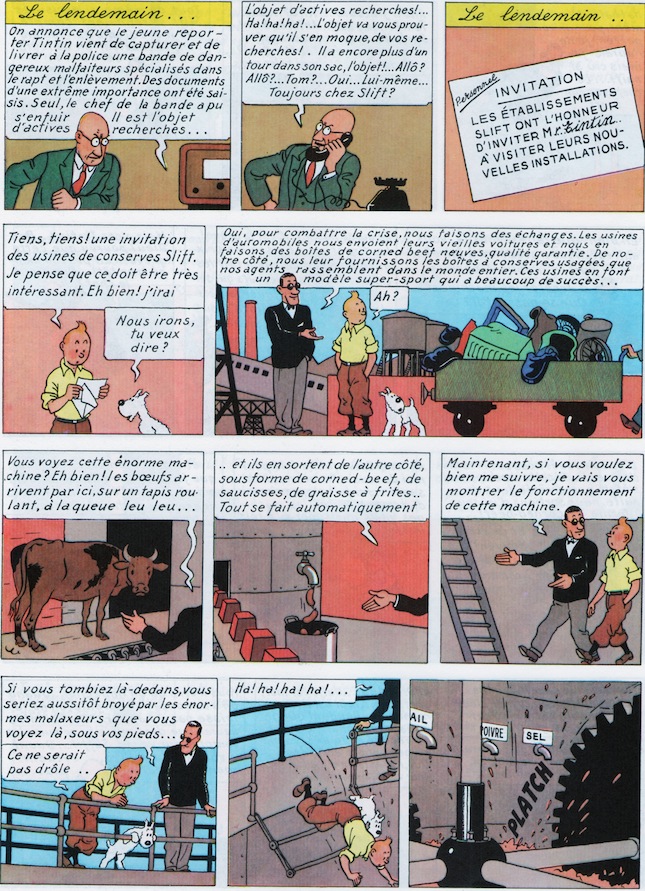
The success of urban legends in the popular culture can be explained by their link with other stories, heard in fairytales, litterature, TV-series or films. They are linked in a gigantic network of stories and part of a collective imagination. I tried to restitute these links in my books. It was sometimes difficult because I had the impression, in some chapters, to engage in too many directions. By the way, I had to re-write some parts of the book several times during the writing process !
I guess that it was, also, hard to compile all your researches to design the seven chapters of your book ?
Urban legends always refer to various themes. In legends, an aggression can for example be caused on women, children or animals. And a story can have different entries. Some authors chose a thematic approach, which was not my choice.
I prefer to “organize” legends by their implicit message : the reason why people told them and what they expect from those to whom they told them. Following this classification, we have :
- warning legends which allow us to warn people against an imminent danger
- moralizing legends where somebody outside of the teller’s community act immorally. He/she reaps death instead of the pleasure or success he or she was waiting for. The tellers make fun of him or her and reinforce their moral values.
- revenge legends which told the story of a revenge and virtually allow the tellers to be a part of that revenge.
- supernatural legends which are a way to us to question death or normality.
- and last, cynical legends where the characters act immorally or fool the authorities but succeed in their goals,a thing that is normally punished in urban legends. These legends have a cathartic function : we all hope that we will, for example, be confronted to a teacher or an harsh superior and that we will way-out the situation with a good joke, escaping punishment.
Another difficulty in my work was the collecting methodology : when we ask a person to tell us urban legends, he or she will tell stories in which he or she does not believe ! We can eventually ask him or her : “can you tell me strange or creepy anecdotes you know ?”. But these anecdotes can be true! For my thesis I mainly used stories collected on the internet, to have the opportunity to analyse how these tales were transmitted.
All the orally told legends I had a chance to collect were told to me indirectly. My flatmate for example told me one day that during a bachelor party a friend of a friend had his boots filled with expanding foam. The guy fell asleep and when he woke up they had to bring him to hospital and he had to be amputated ! Firstly, I did not question my flatmate. But I quickly doubt that it was true : it was too big to swallow, and I cannot find any report of that story in the local news. I found indeed that it was an urban legend!
It is so nice, “catching” urban legends this way ! We can observe the effects of the tale, the way it is told to us, the fact that we don’t question a friend’s word … All these belief’s mechanisms are interesting to study. I was marked by L’empire des croyances (2003) by Gérald Bronner. Discovering all the elements that influence the fact that we believe or not a story is more interesting than telling people legends are believed by non-educated person, women or teenagers, as Edgar Morin argue in La rumeur d’Orléans (1969). It’s not a question of education or intelligence. Some legends make sense to us because they speak to our intuition or values. When we work on that subject we, of course, have a kind of alarm bell which ring when we are confronted to certain stories ! But when we are overwhelmed by the subject’s complexity we tend to simply believe or adhere to a prevention or solidarity message. Inform our family of a danger explained in a fictional story become more interesting than its truthfulness.
This make me think that during the 2014 clowns sightings in France, teenagers were mobilized in anti-clowns Facebook groups. They thought they were helping the community by preventing dangers.
That’s true ! I did a research on that subject which was presented at the International Society for Contemporary Legend Research meeting and published in Contemporary Legends. This journal give access to great folklorists little known in France such as Bill Ellis, Sandy Hobbs or Linda Dégh. Ben Radford wrote an extensive book on this “clown” phenomenon in the Eastern countries. It refers to my work on the French situation.
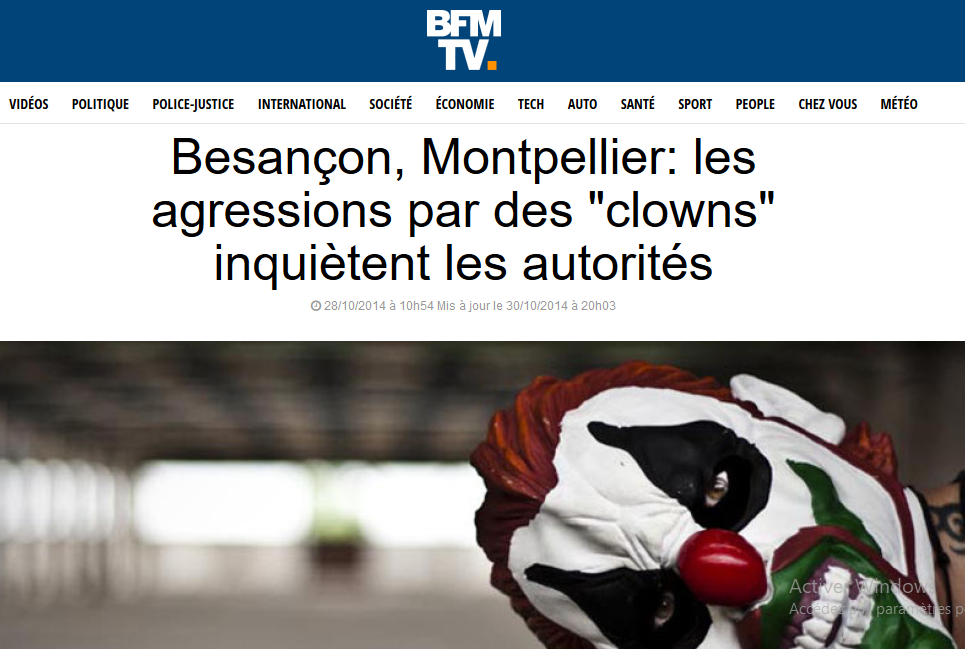
Anyway, I can predict that there will be clowns during the next Halloween! The ‘It’ movie, adapted from Stephen King best-seller, will be on screens and can act as a catalyst. It was the same phenomenon in 2014 with the DM Pranks productions videos. These video pranks showed killer clowns in parking lots. They were quite popular amongst teenagers and inspired them. In 2017 we might be confronted again to an ostension phenomenon : people reproducing the script of an urban legend to make it real. And, again, people could use the clowns visibility to act badly.
The WWI takes a great part of your book. Why are we facing so many rumors in war times ?
Simply because during wars we cannot trust the official information. There is an external propaganda addressed to the enemies, but also an internal propaganda addressed to the population. This last one can help avoid panic scenes. Authorities downplay the war damages or defeats in order to prevent a drop in population’s mood. In that context rumors are sometimes more trustworthy than official information.
By demonizing the enemy, urban legends and rumors can also help the people to kill him without regrets or culpability. Amongst the German soldiers, Belgian were seen as mavericks ‘snipers’. And we said their children used to maim German injured soldiers or corpses, cutting their fingers to steal their rings for example. The German army was so panicked that it began to commit even harsher abuses. In the Belgian side we said Germans cut the children’s hands to prevent them from becoming ‘snipers’. This horrible rumor has been dismissed but helped the United States’ entry into the war.
Positive rumors, which help the soldiers and the population to keep their spirits up are less represented throughout the book. There were for example postcards reproducing a witch’s prophecy about William II’s death. This legend helped the population to keep hope : the war would be over soon. We can also cite visions of Virgin Mary, protecting soldiers, or the Angels of Mons legend. This last legend has been studied by Prof. David Clarke. It pretend that angels succeeded to keep the German army away in Mons. Soldiers also kept certain objects with them, such as Nénette and Rintintin wool dolls or pieces of bombshells which had spared them. They were supposed to protect them from bombing.
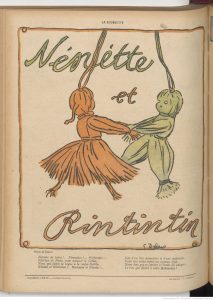
At the time of the 1914-1918 Centenary, postcards, testimonials, objects became easier to access, historical researches has been funded and a lot of old newspaper digitized. We will discover more about the WWII during its own Centenary, when we will update our knowledge and collect all the stories which spread during the war.
Chain letters were also a way to maintain hope during the WWI. Most of them were prayers. Their senders tried to bring good luck. And there were also this feverishness : everybody was desperately waiting for news from the front by mail.
As a French you certainly heard about this other “strategy” : some French soldiers chose round trip tickets before taking the metro in Paris at the “Combat” [now Colonel Fabien] station. They hoped that they would be back to punch the return ticket.
In Brussels, Belgium, the inhabitants were surprised by the German invasion. They wanted to show that they didn’t accept the German occupation. They resisted with jokes and small-scale means such as coffee cups or brooms with German flags. Sweeping in front of your enemy was a way to make fun of him, and a kind of patriotic act!
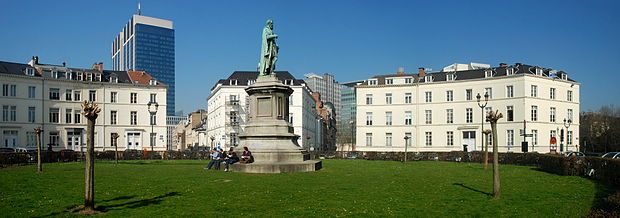
Besides, even if the Brussels population didn’t have the possibility to fight with guns, they didn’t hesitate to use their words to attack the German soldiers! In 1919, a journal was written for the soldiers who returned from the front : it was full of Brusselians’ jokes addressed to the enemy during the occupation! Same attitudes were seen during the WWII. It is said that, one day, the enemy was informed a resistant was hiding in the Barricades’ place in Brussels. The Gestapo agents did research this person everywhere ; after hours they understand that the name given to them was André Vesale …It was the name of the statue at the center of the place !
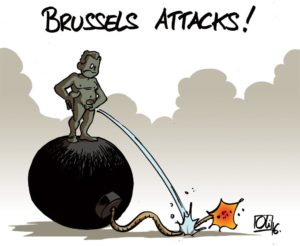
We find here the idea behind Manneken Pis, this famous Brussels’ statue. Belgium has been invaded by a lot of countries during its history and the Belgian people sort of developed a sense of distrust towards authority. Manneken Pis is often represented in cartoon pissing on enemies. It’s as if Belgian were telling to their invaders : “Ok, you can be there but you will have no rest ; we will bother you by all means, and continue to piss on you!” Besides, after the 2015 attacks in Paris Manneken Pis was represented by cartoonist pissing on bombs!
Let’s talk about surnatural legend now. I have this impression that if we compare urban legends to the traditional ones, the surnatural is less represented in urban legends (except in vanishing hitchhikers stories). Monster are replaced by true animals, such as alligators, and we face more “rational” fears.
It’s true there is a kind of “rationalization” of these stories over the time : dragons are replaced by alligators, witches are less represented in urban legends … etc. But paranormal stories are not missing in the European modern folklore ! Maybe they are less present in my book because I heard less paranormal stories from my informants. But who knows ; I will perhaps dedicate more room to these stories in my next book.
Little research is done on African and Asian urban legends. But I have this intuition that the surnatural is more present in their folklore. If we read for example Julien Bonhomme’s books, we can see more references to magic, human to animal transformations, or witchcraft in the African urban legends.
In the International Society for Contemporary Legend Research we work with Canadians, English and American researchers. When the annual meeting takes place in Europa we have the chance to welcome Germans, East-Europeans and Russians. It is quite interesting because their urban legends are less known! There is sometimes similarities with Western legends : child abductions stories for example has a similar plot in Belgium, France but also in the USA and Russia. In the USA they refer to ice cream truck. In USSR, black volgas (the cars used by KGB agents) were the “heroines”of similar legends. These details are influenced by the local culture. It would be interesting to expand this comparative work to countries where we don’t have such informations.
